Requests
This page details all the options for managing Requests in your API Project. These options are located in the Requests panel of the Requests tab in Studio.
Add Request
To add a new Request, click the + icon to the right of the Requests title.
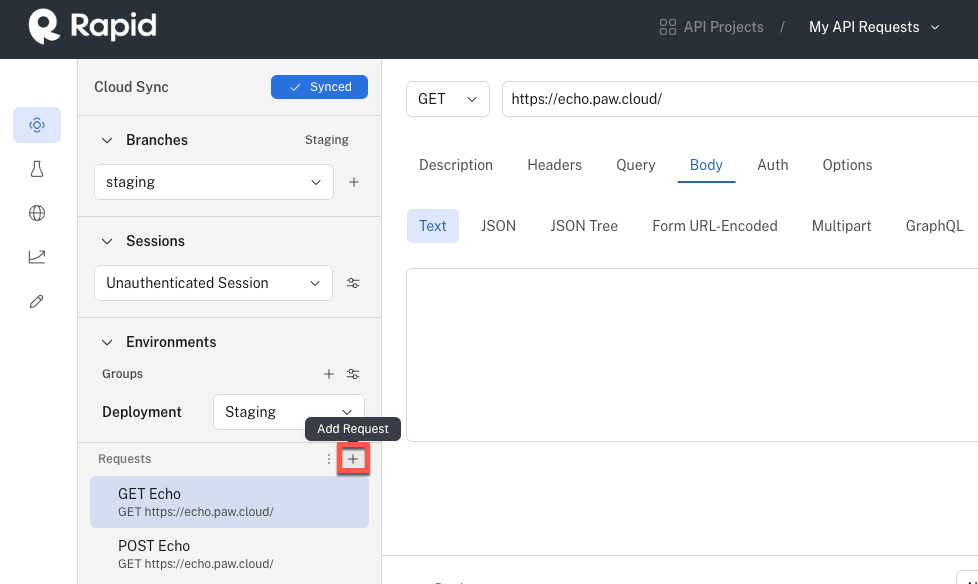
After adding a new request, it will be assigned a default name (e.g. Request 1). To adjust this name, navigate to the request's Description tab.
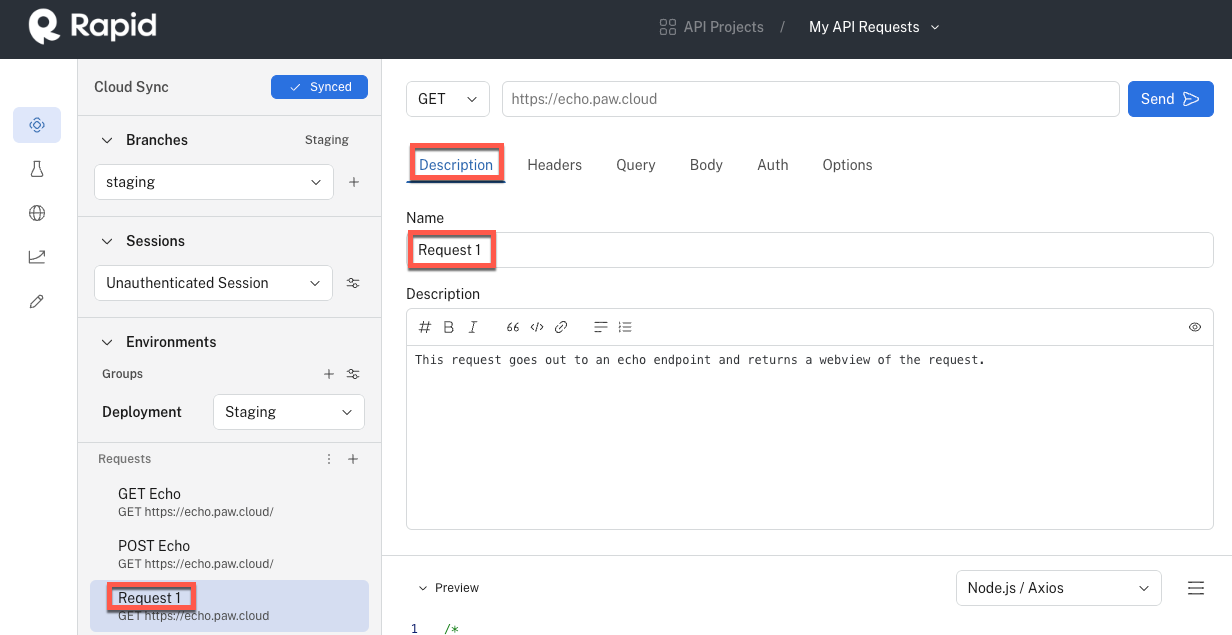
New Group
RapidAPI supports grouping requests, which can be useful for improving the organization of your requests. Note that you can also have groups within groups.
To create a new group, select the three vertical dots to the right of the Requests title and click the New Group option.
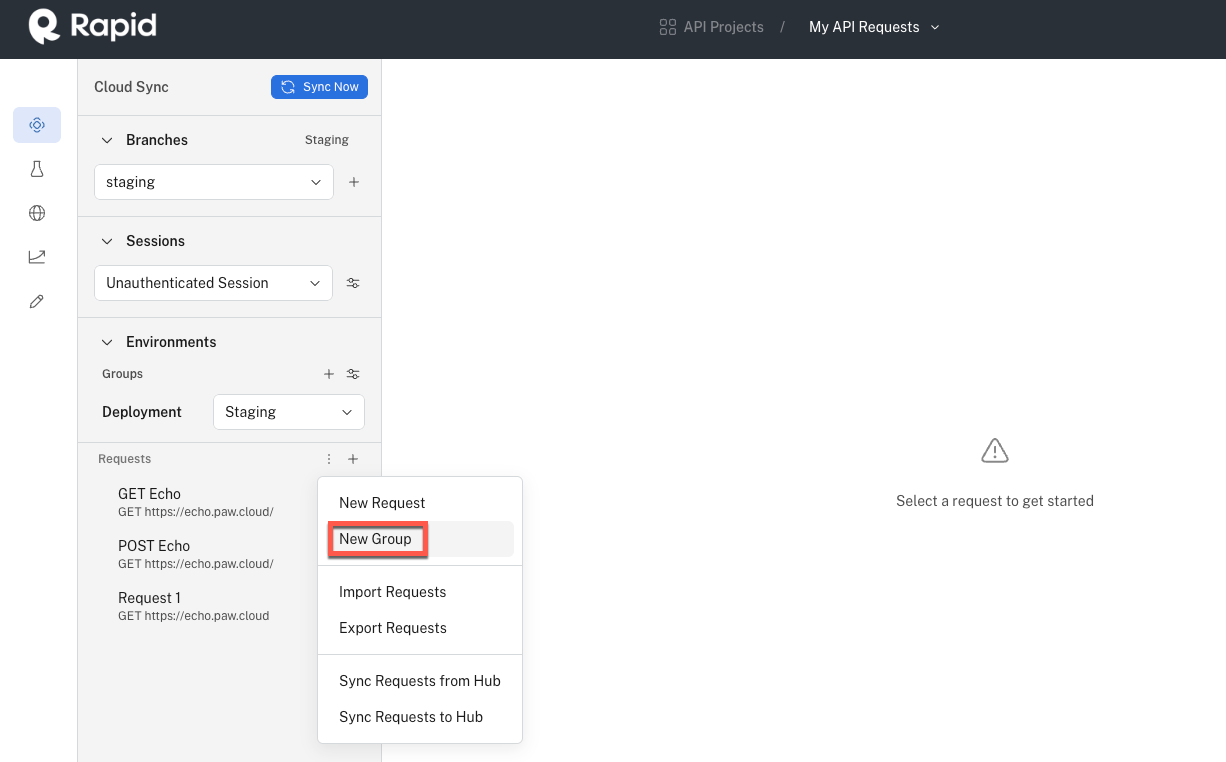
Renaming Groups
You can rename a group by double left-clicking on the group's name and typing in the new name for the group; after you click off this field, the name will be automatically saved.
Moving Groups and Requests
You can rearrange or relocate requests and groups within other groups by clicking and dragging.
Duplicate requests
To duplicate a request, select the three vertical dots to the right of the Requests title and click the Duplicate option.
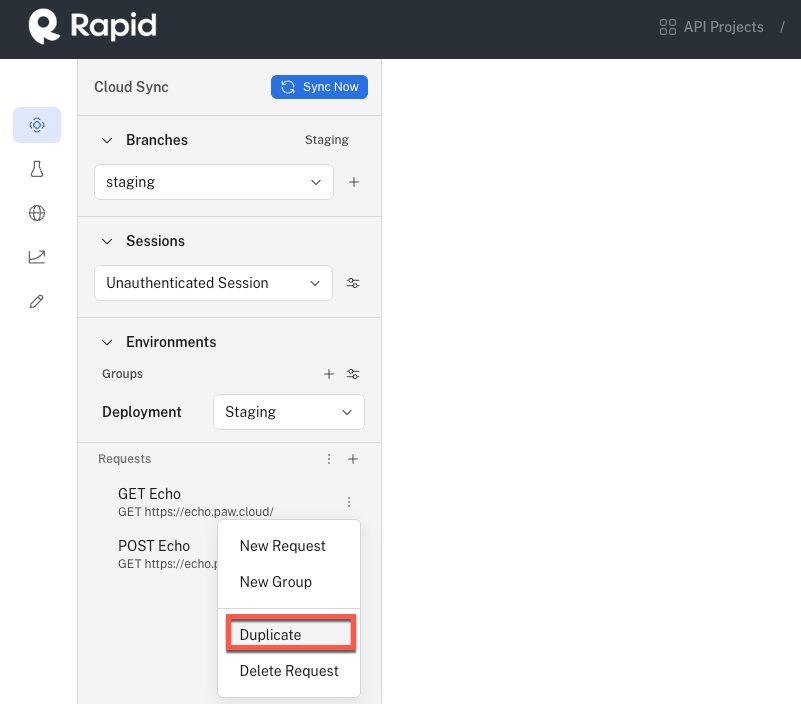
Deleting Groups or Requests
To delete a group or request, select the three vertical dots to the right of the Requests title and click the Delete option.
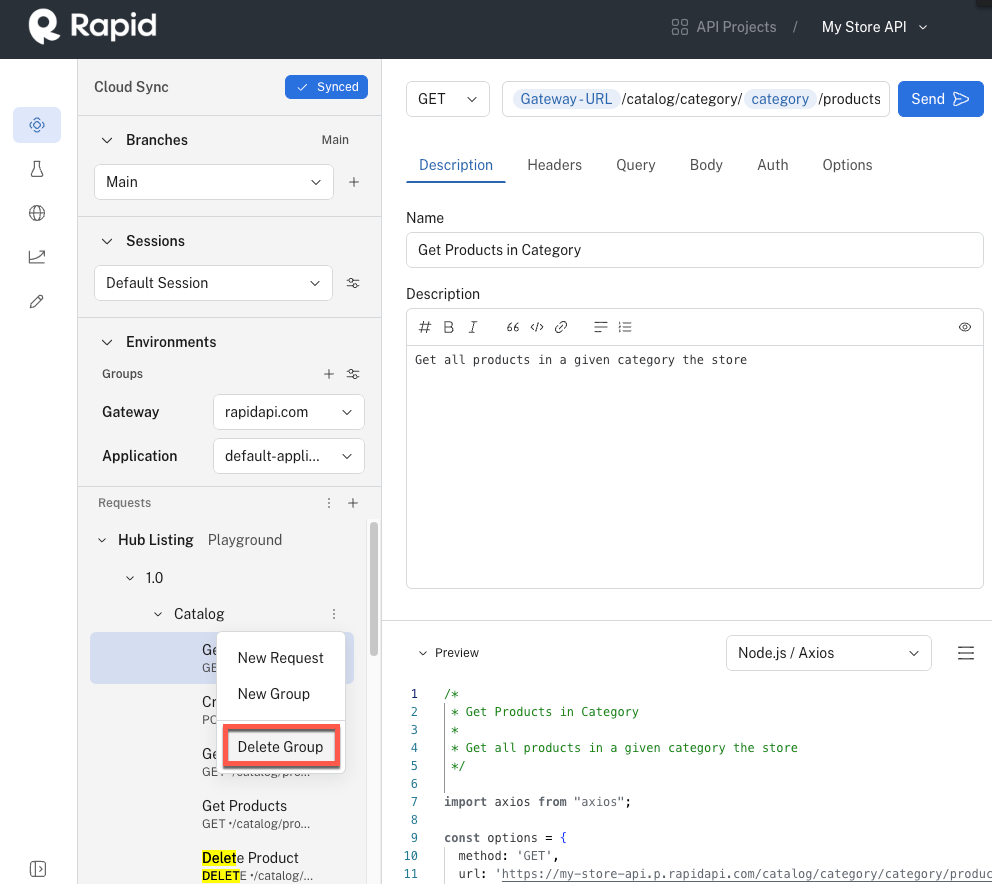
Import Requests
You can import requests into your API Project from an API spec file, remote URL, or text input. To begin importing requests, select the three vertical dots to the right of the Requests title and click the Import Requests option.
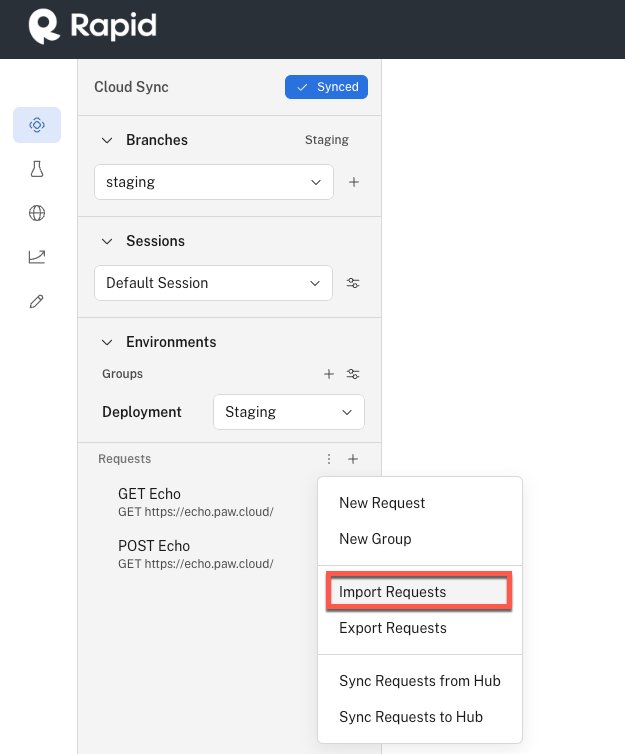
This will open the Import Requests Dialog where you can select which type of importer to use: OpenAPI 3.0.3 Importer or Postman Collection Importer.
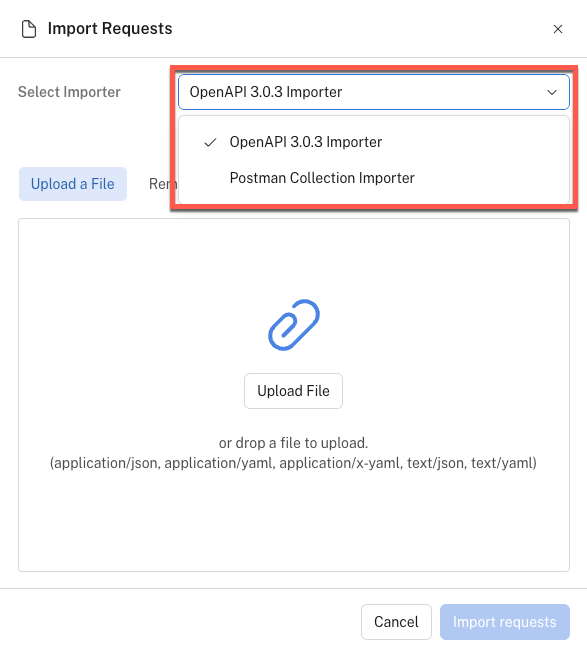
After selecting the importer for your API spec file, you must select a method (Upload a File, Remote URL, or Text Input) to import your file.
After importing your requests they will be listed as a new group in the Requests panel.
Upload a File
Note that after you upload an API Spec file, you can review it in the Text Input tab before importing the requests.
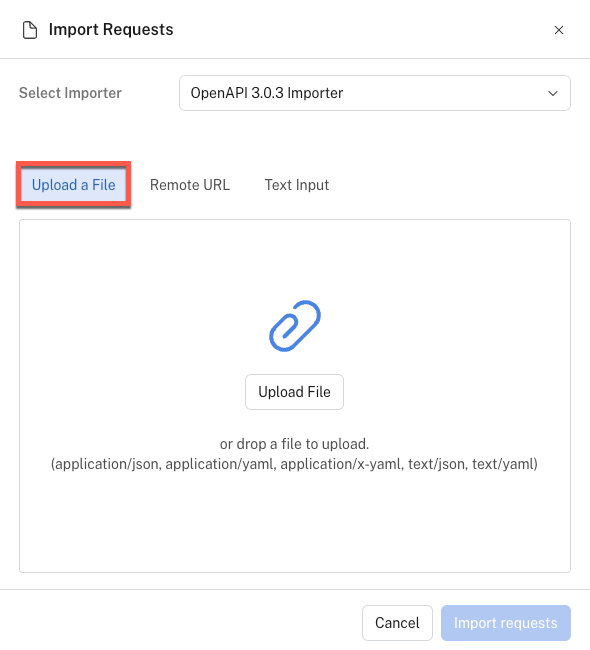
Remote URL
When uploading an API spec file from a URL, the Upload button replaces the functionality of the Import requests button and will add the requests to your API Project.
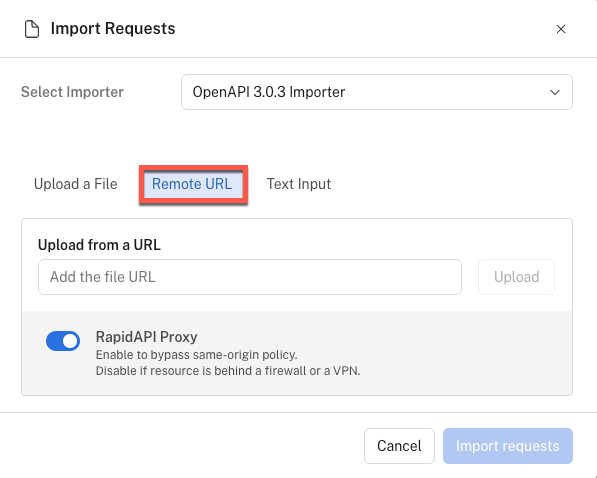
Text Input
After pasting your API Spec into the Text Input box you must select the correct format you are importing: Text, JSON, and YAML.

Export Requests
RapidAPI makes exporting your requests to an OAS file or your preferred programming language simple. To export requests, select the three vertical dots to the right of the Requests title and click the Export Requests option.
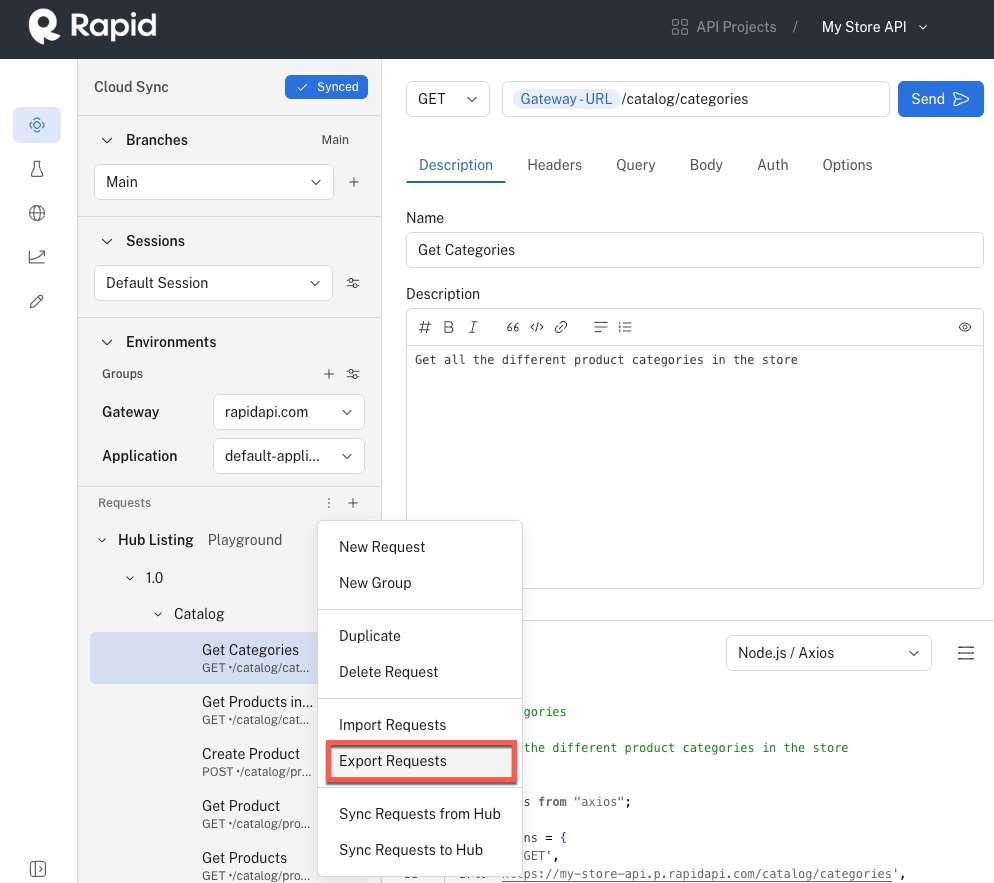
In the Export Requests dialog, enter the filename for your export and select the export type you want.
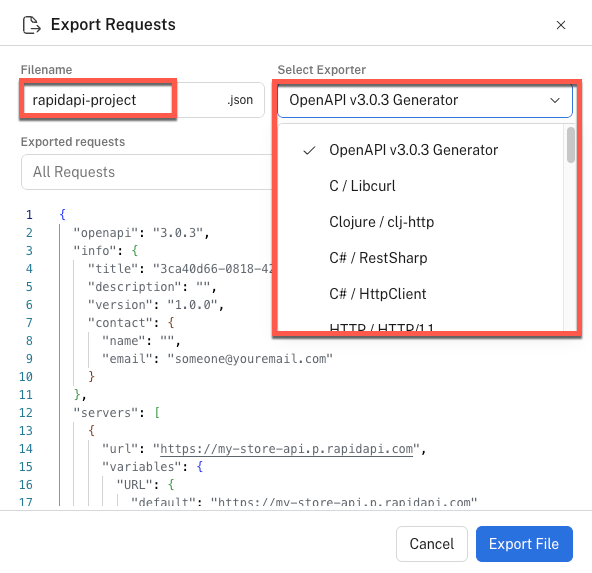
By default, all requests will be exported. If you want to select one or more specific groups of requests to export, click the Exported requests drop-down and select the group(s) you want to export. The export preview will automatically update based on your selected export groups.

Sync Requests from Hub
If you want to sync the requests from your API's hub listing into Requests you can use the Sync Requests from Hub option by clicking on the three vertical dots to the right of the Requests title.
Importing requests will overwrite previously synced requests in the groupSyncing requests from the Hub will replace previously imported requests without persisting modifications.
It will not replace other requests that were not listed in Hub API or duplicated, also it will not remove requests that were deleted from Hub.
If you want to keep changes - please duplicate requests first or use different Request Group!
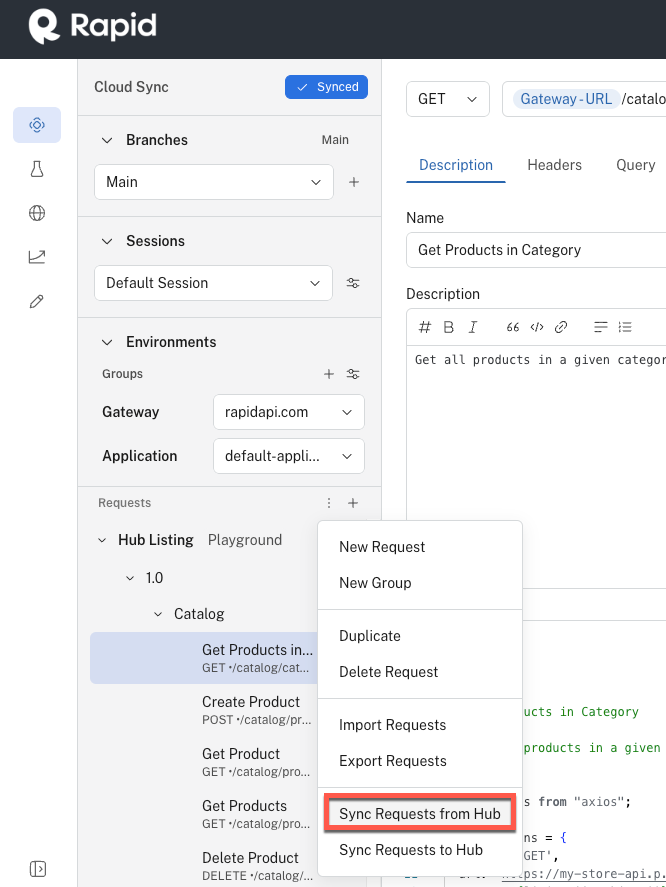
In the Import Requests dialog you can select the group you want to sync the requests into and, if you have multiple versions, which version of the API you want to sync. Before syncing requests from the hub you will need to confirm that you understand this may overwrite previously synced requests, then click the blue Sync button. If you want to do undo the import you can do so by pressing Cmd + Z (on Mac) or Ctrl + Z (on Windows).
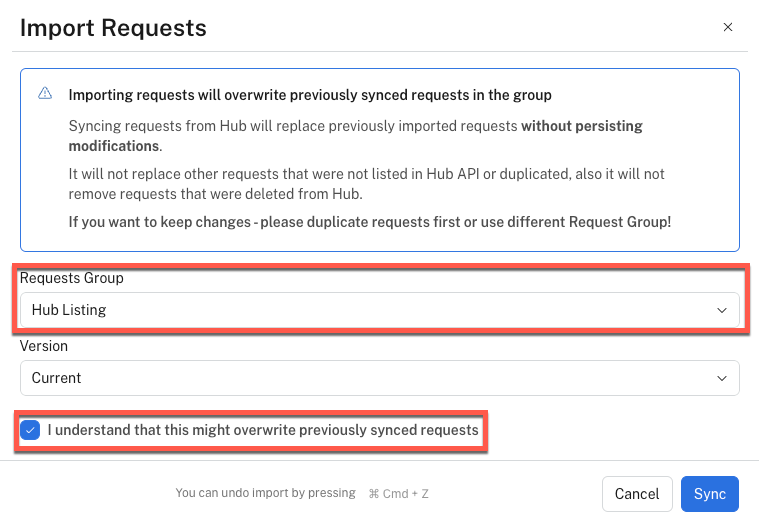
Sync Requests to Hub
If you want to sync requests to your API's hub listing you can use the Sync Requests to Hub option by clicking on the three vertical dots to the right of the Requests title.
Exporting requests to Hub will overwrite previously synced requests in the groupAll existing configurations will be overwritten.
If you want to keep previous changes - please use different API Version or create a new one
You can learn how to create a new API version here.
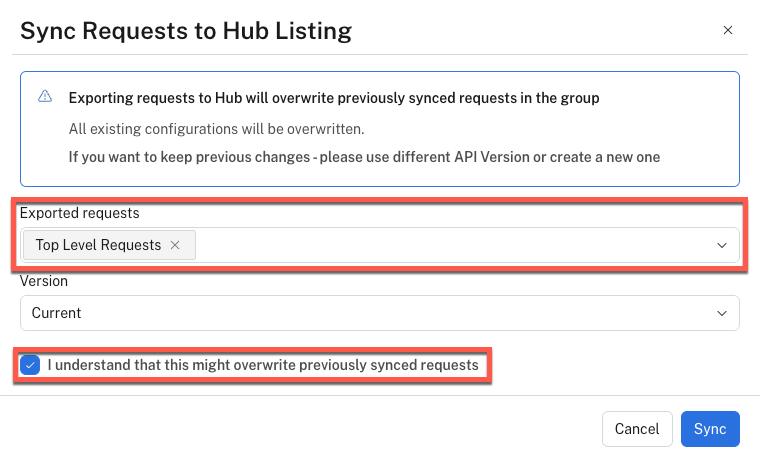
In the Sync Requests to Hub Listing dialog you can select the group(s) of requests that you want to sync into the hub listing using the Exported Requests dropdown. If you have multiple versions of the API on your hub listing you can select which version of the API you want to sync into using the Version dropdown. Before syncing requests into the hub listing you will need to confirm that you understand this may overwrite previously synced requests, then click the blue Sync button.
Updated 7 months ago
